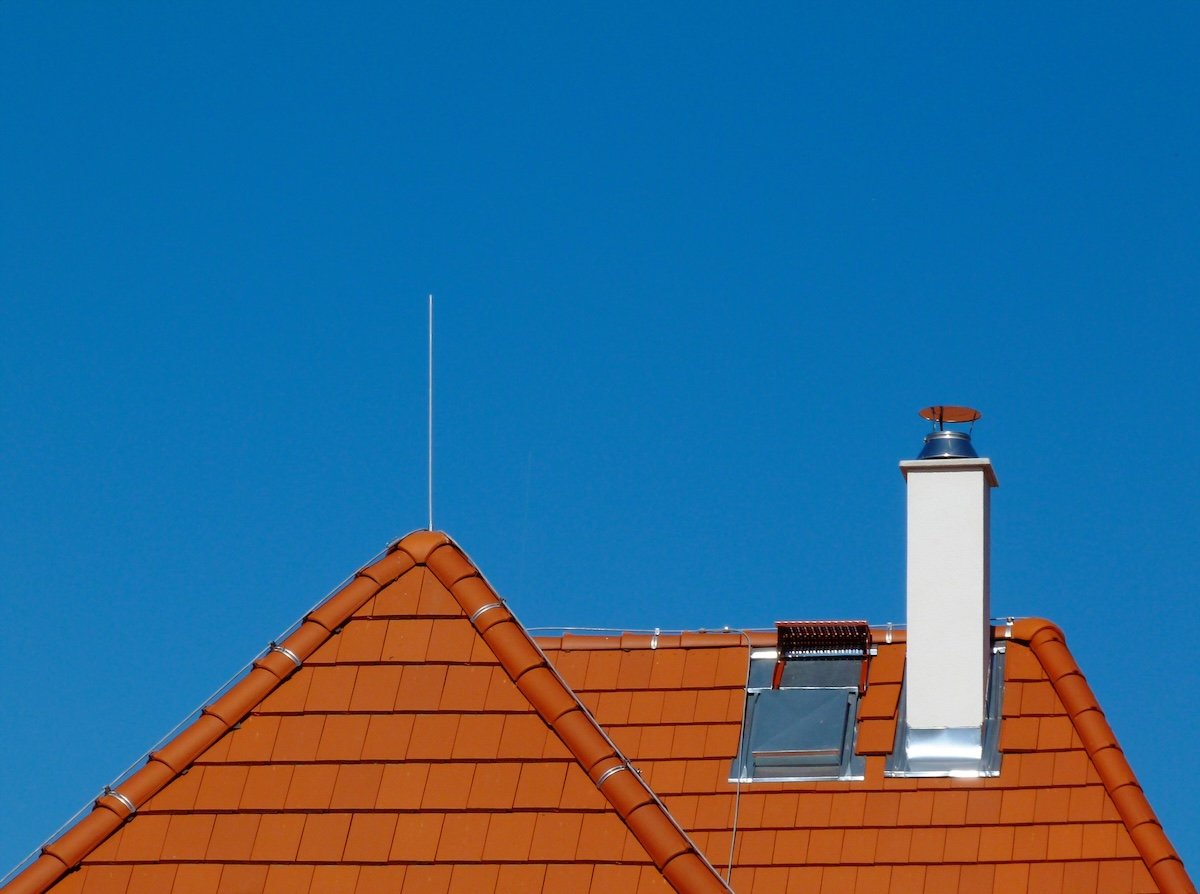Roof flashing repair is one of the most important maintenance tasks a homeowner can tackle to protect their roof from water damage. Flashing is the thin material installed at key transition points on a roof to prevent water intrusion. When flashing is damaged, loose, or improperly sealed, it can allow leaks that lead to rot, mold, and structural issues. Keeping your flashing in good condition helps keep your entire roof system waterproof and secure.
In this blog, we’ll cover:
- What flashing does and where it is commonly found
- How to spot signs that your flashing needs repair
- A 6-step process to fix common roof flashing problems
Whether you’re handling minor maintenance or preparing for professional service, this guide will walk you through the essentials.
💧 What Is Roof Flashing and Why It Matters
Flashing Protects Vulnerable Areas
Flashing is installed anywhere your roof meets a wall, chimney, valley, or vent. It prevents water from seeping into joints and causing damage to the underlayment and roof decking. Common flashing materials include aluminum, galvanized steel, and copper.
Types of Roof Flashing
- Step flashing for roof-to-wall transitions
- Valley flashing for channels where two roof planes meet
- Chimney flashing including base and counter flashing
- Vent pipe flashing around plumbing stacks and exhaust vents
- Drip edge flashing at the roof’s eaves and rakes
Each type plays a specific role in guiding water safely off the roof. To better understand how they work together, check out this guide to different roof parts.

Flashing Failure Can Lead to Serious Damage
If flashing is cracked, missing, or improperly sealed, rainwater can get beneath the shingles and cause:
- Wood rot
- Mold and mildew
- Ceiling stains
- Insulation damage
Repairing flashing promptly is a cost-effective way to avoid major roof repairs down the road.
⚠️ Signs Your Roof Flashing Needs Repair
Even if your shingles look fine, flashing damage can be hidden until leaks begin to show. Here are some signs to watch for:
- Water stains on ceilings or attic insulation
- Rust or corrosion on exposed flashing
- Loose or missing flashing around chimneys or vents
- Shingles curling near flashing areas often indicate bigger issues. If you’re seeing this, our shingle roof repair guide can help.
- Moisture near walls where the roof meets vertical surfaces
If you’re unsure, a roof inspection can identify problem spots before they become major issues.
🛠️ Tools and Materials Needed for Flashing Repair
Before you start buying supplies, it’s worth knowing the average roof repair cost so you can plan your budget wisely.
Tools
- Pry bar or flat bar
- Hammer or drill
- Tin snips
- Caulk gun
- Measuring tape
- Utility knife
Materials
- Replacement flashing (metal or rubber boot)
- Roofing nails or screws
- Roofing cement or sealant
- Asphalt roofing shingles (if needed)
- Underlayment or felt paper
Always use safety gear and work on a dry day to avoid slipping hazards.
🏠 Roof Flashing Repair (Waterproof Your Roof in 6 Easy Steps)
Follow these six practical steps to repair or replace damaged roof flashing and keep your home protected.

1. Identify the Damaged Flashing
- Inspect flashing around chimneys, vents, skylights, and walls
- Look for cracks, gaps, rust, or lifted sections
- Check underneath shingles near flashing for hidden water damage
Be thorough and inspect from inside your attic if necessary.
2. Remove Damaged Materials
- Carefully lift surrounding shingles using a pry bar
- Detach old flashing by removing nails or screws
- Clean the area to remove debris, old sealant, or rust
Avoid damaging surrounding shingles if you plan to reuse them.
3. Cut and Prepare New Flashing
- Measure the area needing repair and cut new flashing with tin snips
- Test-fit the flashing to ensure a snug and proper fit
- Pre-bend or shape flashing as needed for corners and angles
Ensure the flashing overlaps correctly with surrounding materials for effective water flow.
4. Install the New Flashing
- Slide the flashing into place beneath the shingles
- Nail or screw it down securely, using corrosion-resistant fasteners
- Apply roofing cement or sealant under edges to create a watertight seal
Overlap new flashing with existing pieces to maintain the flow of water off the roof.
5. Reinstall Shingles and Underlayment
- Replace or reposition any shingles lifted during the process
- Nail shingles into place and seal nail heads with roofing cement
- Patch underlayment as needed to restore a continuous barrier
Make sure no fasteners are exposed and everything lies flat.
6. Seal and Inspect the Finished Area
- Use a caulk gun to apply a bead of roof sealant around the flashing edges
- Smooth with a gloved finger or putty knife to create a clean seal
- Inspect the entire area and test for gaps, loose parts, or missed spots
Once completed, your roof should be watertight and ready to withstand the next storm.
❌ Common Mistakes to Avoid During Flashing Repair
Flashing repairs require attention to detail. Avoid these mistakes to ensure long-lasting results.
- Using the Wrong Type of Flashing: Each part of your roof requires a specific flashing type. Using step flashing where valley flashing is needed can cause water to back up and leak.
- Not Overlapping Correctly: Flashing must always be layered in a way that allows water to flow downward. Improper overlap can trap water and cause leaks.
- Skipping the Sealant: Fasteners alone are not enough. Roofing cement or sealant is necessary to close gaps and create a watertight barrier.
- Reusing Severely Damaged Shingles: If shingles near the flashing are cracked or curling, replacing them helps extend the life of the entire repair. Here’s a walkthrough on how to shingle a roof properly to get it right the first time.
📞 When to Call a Professional
While minor repairs are manageable for some homeowners, there are times when professional help is the better choice.

Complex Flashing Systems
- Chimneys with multiple intersecting planes
- Skylights or unusual roof angles
- Roofs with built-in gutters or historical materials
Signs of Widespread Damage
- Multiple leak points
- Water-damaged underlayment or decking
- Mold or rot inside the attic
Safety Concerns
- Steep or multi-story roofs
- Wet or icy surfaces
- Lack of proper safety equipment
A licensed roofing contractor can repair flashing quickly and safely, while also checking for related issues.
⭐️ 3 Preventative Tips to Extend Flashing Life
Regular maintenance goes a long way toward preventing future flashing failures.
- Clean Debris From Roof Valleys: Leaves and branches can trap moisture and speed up rust or rot near flashing.
- Schedule Annual Roof Inspections: Professional inspections catch small issues like cracked sealant or loosened flashing before they turn into leaks.
- Trim Back Trees: Overhanging branches and storms can knock shingles loose and damage flashing. Learn what to do if you find missing shingles after storms.
🤝 Trust J-Tech Construction & Solar for Roof Flashing Repair
Roof flashing repair may seem like a small detail, but it plays a big role in keeping your home safe from water damage. Fixing flashing the right way ensures that water drains correctly off your roof and keeps your structure dry and sound. Whether you have a chimney leak or suspect aging flashing near your vents, don’t wait until the next storm makes things worse.
Need help with flashing repair or a roof repair? Contact J-Tech Construction & Solar today to schedule a free estimate and protect your home the right way.






